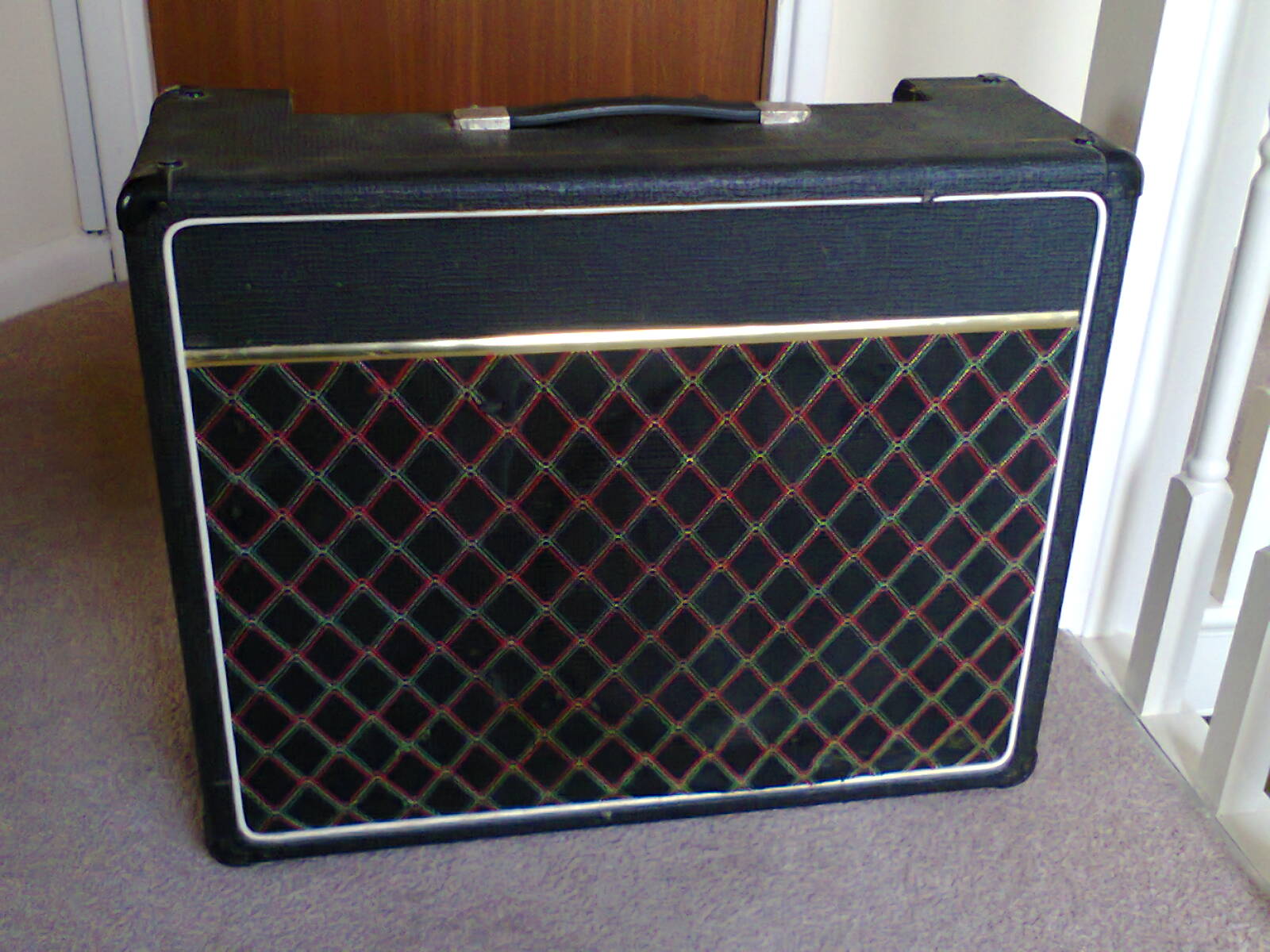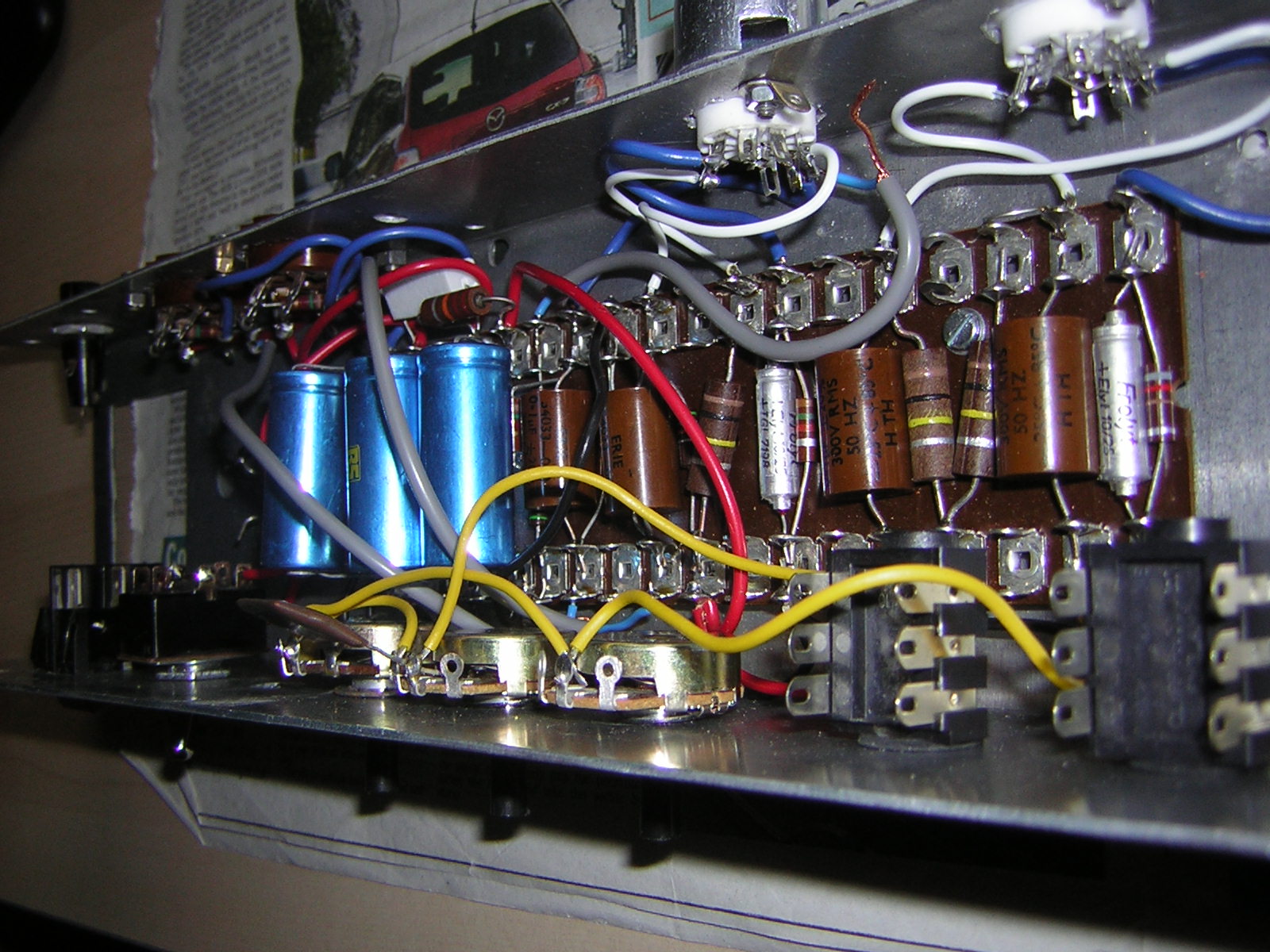Hi to everyone. Have really enjoyed reading posts on these forums for some time, especially on the legendary 5E3. A unique amp with a unique sound. I have been working on my own version of this amp for several months now so thought I should share it with other knowledgeable dudes! I have chosen to build my british 5E3 in an old Vox transistor amp cabinet (Escort lead 50 I think). I think it has a nice vintage look to it. I'm afraid it has a solid state rectifier at the mo as I couldn't find a suitable type to power a 5Y3 tube. I dont think the sound suffers much because of this but purists might disagree! It uses PM 6V6's (Chinese I think) at the mo but will be trying others in future. The speaker is a good old reliable Celestion which adds to the british flavour I think. The chassis is the original steel job that came with the amp but suitably bent and drilled to take the tubes, trafos etc. Please check out the pics. It is still work in progress so will update on future activity. Thanks.








Comment